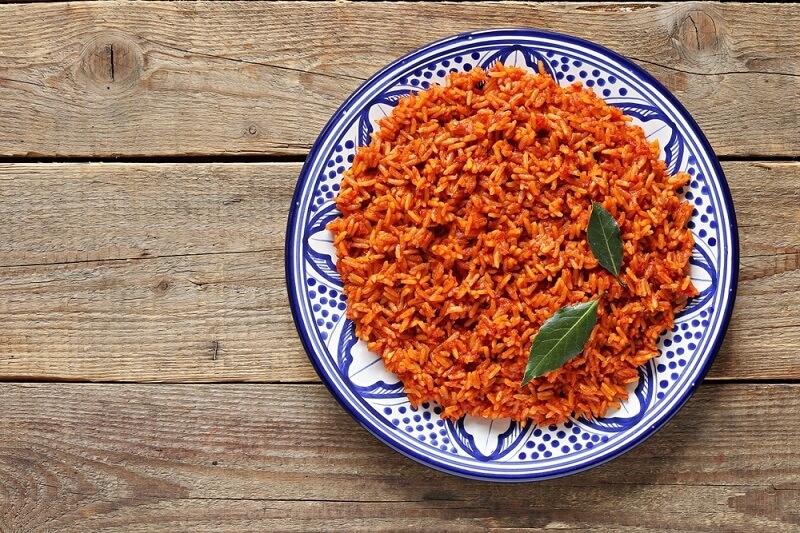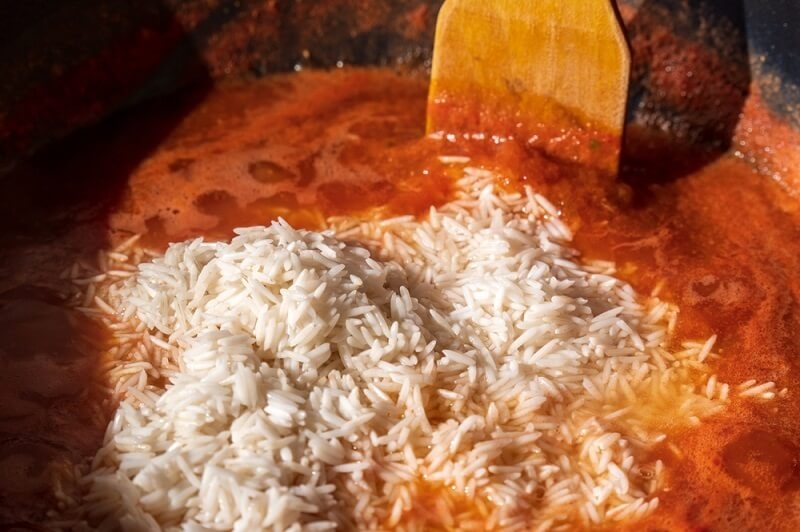
Few foods encapsulate the essence of African cuisine in the same way as the Jollof Rice Recipe, an all-in-one dish that represents love, happiness, and celebration. Whether you are learning how to make Nigerian jollof rice, looking for a Ghanaian jollof rice recipe, or just looking for easy African dinner ideas, jollof rice is an experience that will forever link you to the culture of West Africa. Jollof is not only food but also a story being told on every platter, and a Sunday afternoon family gathering is not complete without your family's Jollof. The Jollof Rice recipe is also party food in West African culture, the first meal at every party.
This guide covers everything you need to know, from history to geographical variations. It also includes step-by-step instructions on how to cook jollof rice and the importance of this dish in African culture. In no time, you will be well on your way to mastering this authentic African rice dish and cooking it in your own kitchen.
The origins of Jollof rice can be traced to the ancient Senegambian area, where the Wolof people were cooking a rice dish called "thieboudienne." As rice and tomatoes spread throughout West Africa, many versions of the dish appeared. It became synonymous with the cuisine of several West African countries, including Nigeria, Ghana, Senegal, and others.
For many, Jollof is more than a dish; Jollof is a source of pride and a representation of their cultural identity. The dish has become a staple food at weddings, birthdays, religious celebrations, and community events. Furthermore, the bright orange-red color reflects the joy and warmth of African traditions with the use of various tomatoes and peppers.
Each region adds its own twist, but there are a few things that are "non-starters":

Techniques are just as important as ingredients when learning to make Nigerian jollof rice; please use this basic guide below to get started.
Blend tomatoes, red bell peppers, onions, and Scotch bonnet peppers into a smooth blend and cook down with oil, tomato paste, or Aseke until thick and fragrant.
Add thyme, curry powder, bay leaves, bouillon cubes, and salt. Simmer until these flavors meld and deepen before adding your stock.
Could you add your parboiled rice, combine well, and reduce the heat? Please carefully cover your base with a tight lid or foil to trap and maintain steam, allowing the rice to absorb all of the flavors from the sauce.
Many Nigerians lightly scorch the sauce at the bottom of the pot to achieve the desired smoky burnt flavor, which is called party rice.
This cooking method gives Nigerian Jollof its bold flavors and great spiciness. The great satisfaction that comes from eating Nigerian Jollof makes it one of the best authentic African rice dishes served at any gathering.
There are slight differences between the Ghanaian jollof rice recipe and the Nigerian one. Both Ghanaian and Nigerian jollof rice have a tomato-based sauce with rice, but Ghanaians usually:
The result is scented and slightly lighter, but it is a lively and fabulous West African party food. Debates over which is "best" live on across Africa and the diaspora, but food people know they each have beauty.
Calling Jollof an African rice dish is an understatement—it is a symbol of pride, competition, and joy. Although regional comparisons incite friendly "Jollof wars" between Nigeria and Ghana, Jollof's authenticity relies not just on a region or country but on the common celebration of African heritage expressed through food.
One of the best things about Jollof rice is its versatility. It pairs beautifully with many side dishes and proteins, making it perfect for easy African dinner ideas:
Whether cooking for family or hosting friends, Jollof always makes mealtime memorable.
In many West African countries, no party feels complete without Jollof. It’s the star of weddings, birthdays, and holiday feasts. Its ability to feed large groups with affordable ingredients makes it the ultimate West African party food. Guests often expect to see that big pot of steaming, fragrant rice served with meats, salads, and fried snacks.
The “party version” often features extra oil and a smoky flavor from cooking over open flames—guaranteeing an unforgettable dish that keeps people returning for more.
While Nigerian and Ghanaian jollof dominate the spotlight, other West African nations boast their own versions:
Each version demonstrates Jollof’s adaptability while preserving its cultural essence.
With these tips, your Jollof will rival the finest West African party food you’ve ever tasted.
While Jollof is indulgent, it also offers nutritional value:
With mindful portioning and healthy sides, Jollof can fit into a balanced diet and still serve as one of the best easy African dinner ideas.
Jollof has transcended Africa as an ambassador of African cuisine globally. African restaurants across Europe, America, and Asia have jollof as a must-eat. For many in the diaspora, preparing Jollof rice connects them to their roots and, at the same time, extends their culture to newly formed communities.
The Jollof Rice Recipe is more than a recipe; it is a tradition that brings families, nations, and generations together. From cooking Nigerian jollof rice to enjoying the Ghanaian jollof rice recipe, this feast is declared an African rice dish loved worldwide. Jollof rice will continue to be seen as an authentic African dinner idea and be served at festivals, weddings, and parties; jollof rice will remain the true star of West African party food.
This content was created by AI